30 Super Foods (Not Superfoods) And 5 Easy Recipe Ideas
Get the most nutritional bang for your caloric buck by adding these delicious ingredients to your diet
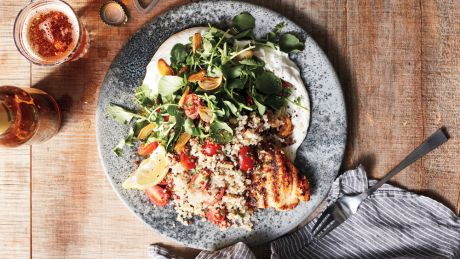
Super Foods Recipes
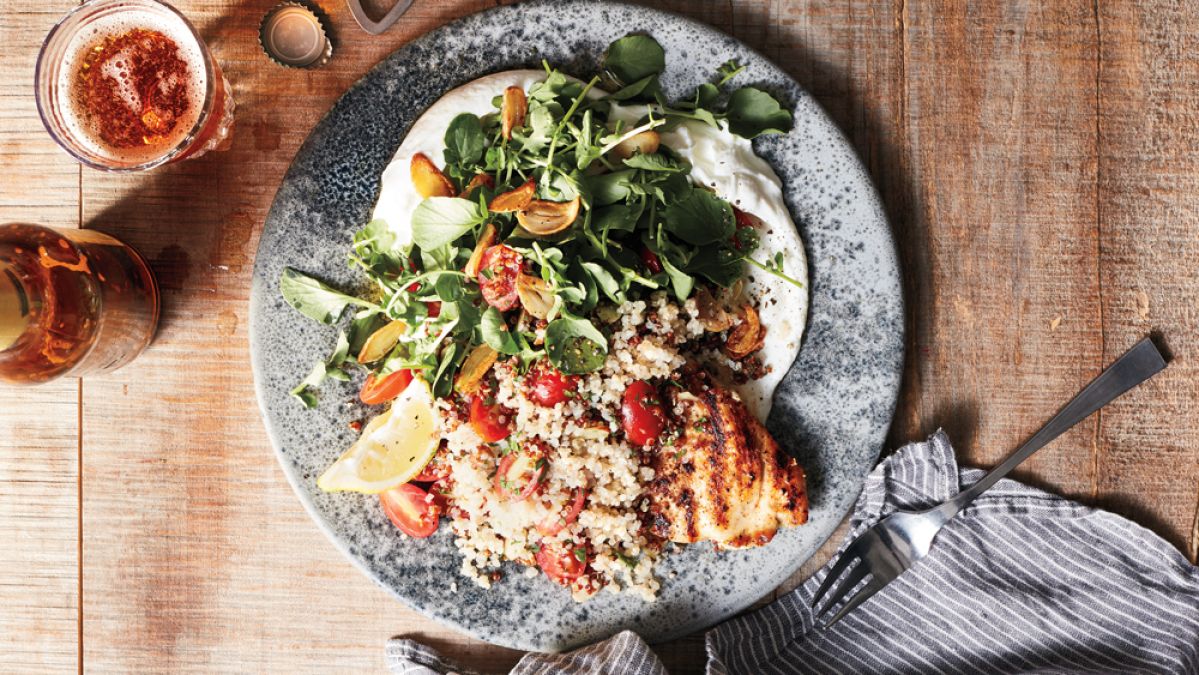
Herby grilled chicken
With quinoa, tomato, parsley, almonds, watercress, lemon juice, garlic, yogurt
Garlic-and-lemon-spiked yogurt makes a quick sauce for grilled chicken. Adding tomato, parsley and almonds to quinoa evokes the Middle Eastern salad tabbouleh. Garlic slices fried quickly in olive oil add a surprising twist to peppery greens like watercress – and almost anything else.
Credits: Photography: Christopher Testani; Food styling: Eugene Jho
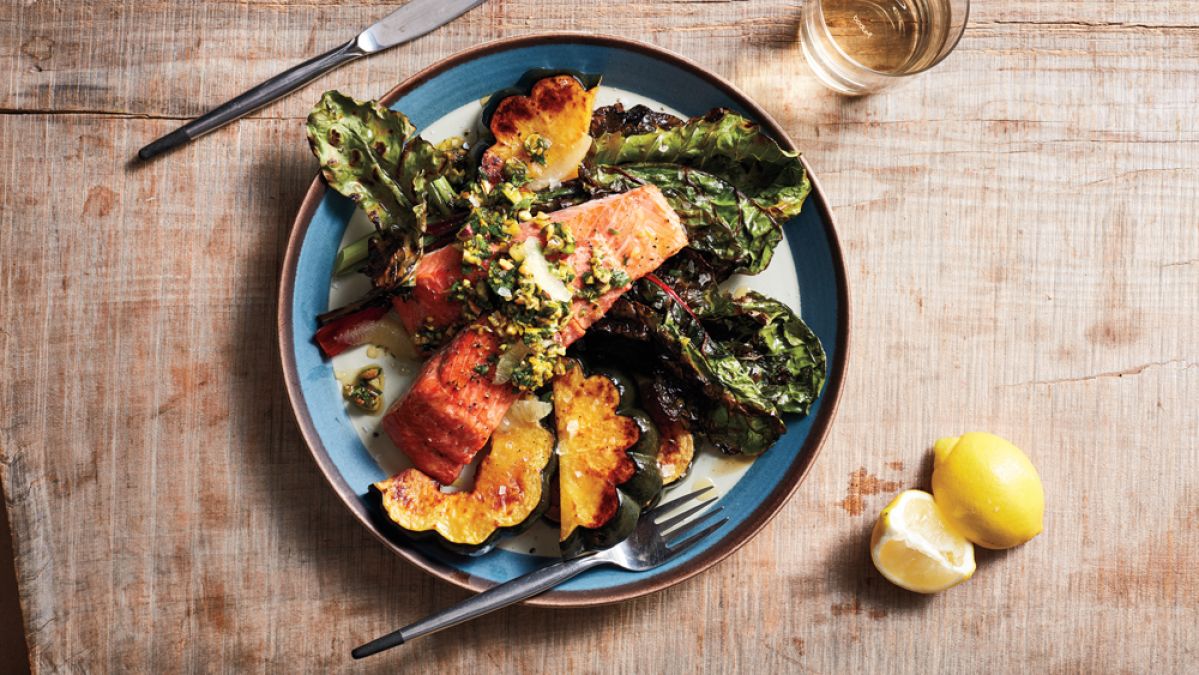
Salmon gremolata with veg
With acorn squash, chard, pistachios, parsley, lemon
The vitamins in chard (A, E, K) and squash (A, C) are better absorbed with fat, like that in salmon. A gremolata (chopped mix of parsley, lemon and pistachio) adds flavour and nutrients with few calories.
RECOMMENDED: How To Cook Pan-Roasted Salmon
Credits: Photography: Christopher Testani; Food styling: Eugene Jho
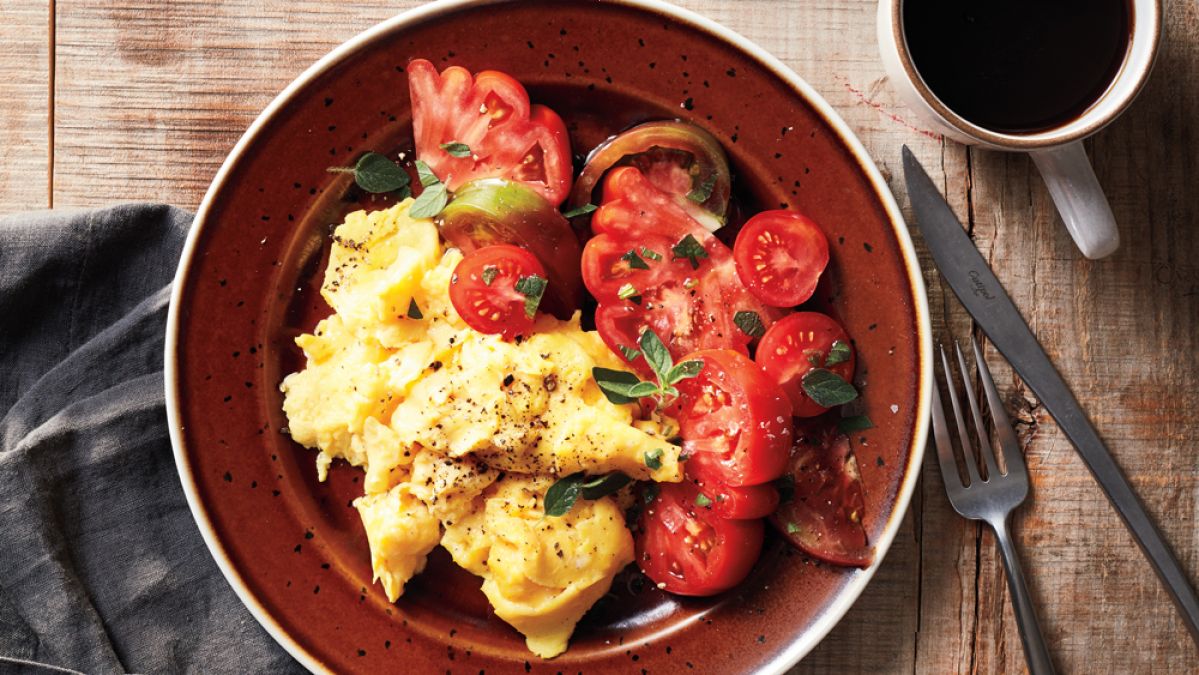
Scrambled Eggs
With tomato, oregano, lemon juice
Pairing scrambled eggs with a fresh tomato and oregano salad looks heartier – which means psychologically it’ll seem more filling – than a watery tomato omelette.
Credits: Photography: Christopher Testani; Food styling: Eugene Jho
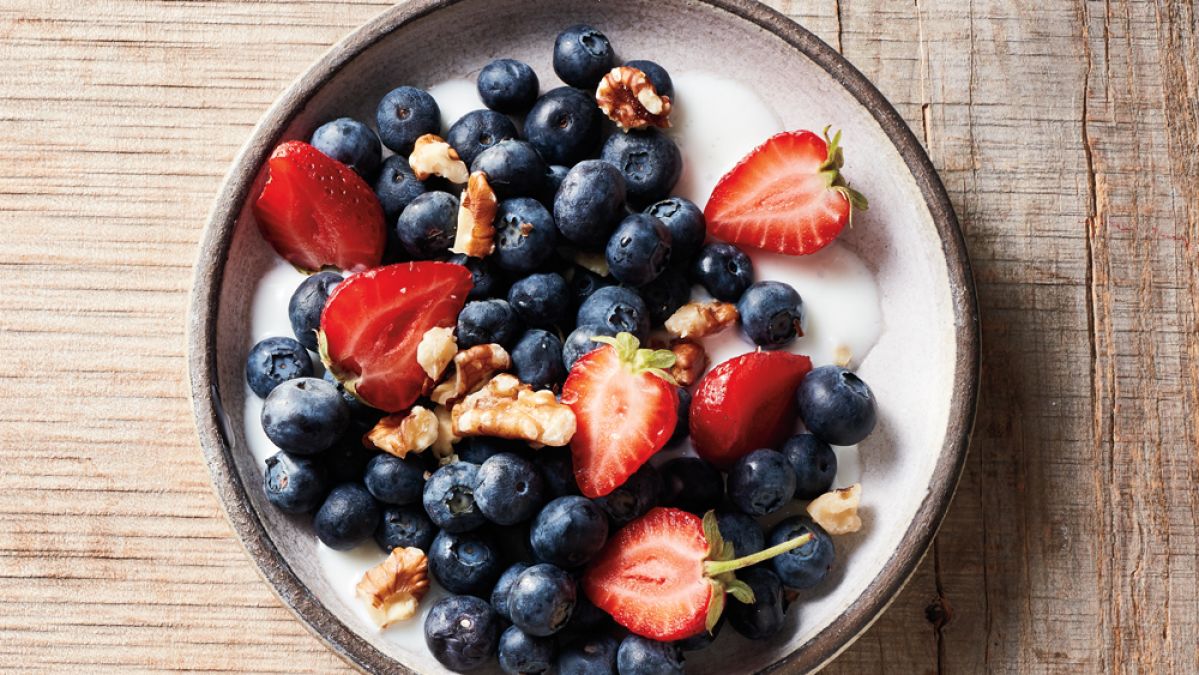
Berry salad
With walnuts, kefir
Kefir makes a rich dressing to add to berries and walnuts to create a satisfying breakfast, lunch or dessert dish (honey optional). It even doubles as a nutritious pick-me-up after a gruelling workout.
Credits: Photography: Christopher Testani; Food styling: Eugene Jho
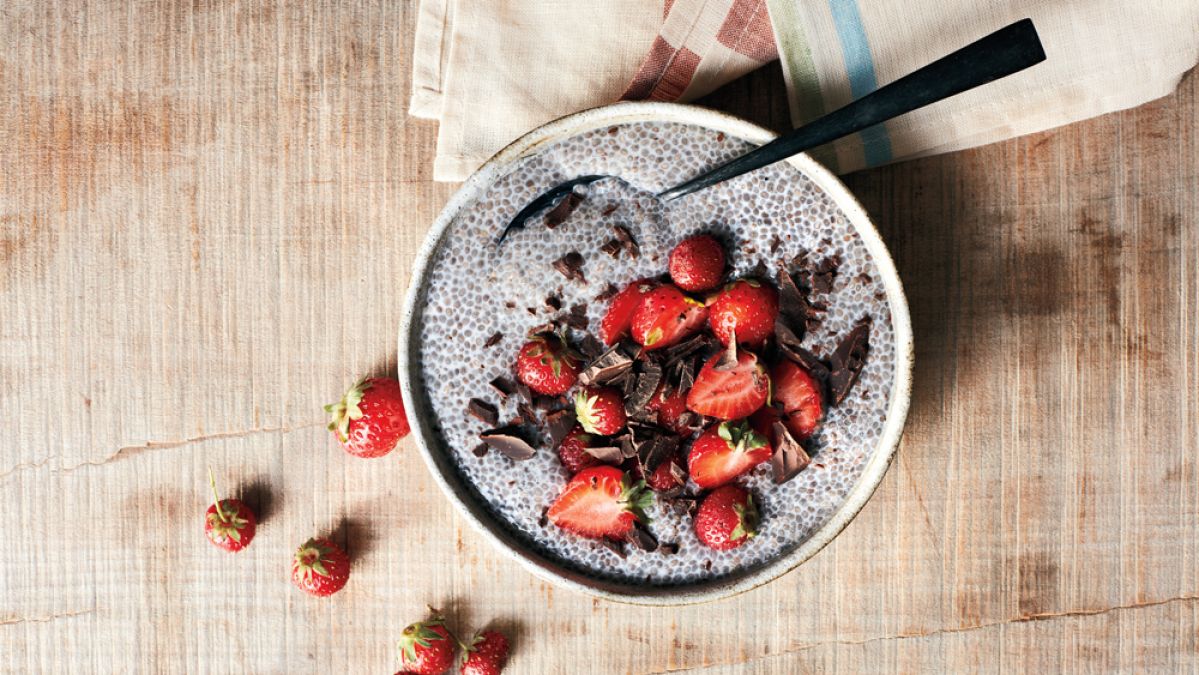
Chia pudding
With almond milk, dark chocolate, strawberries
This raw pudding is just chia seeds soaked overnight in almond milk and garnished with fresh strawberries and the darkest chocolate you like. No extra sweetener needed!
Credits: Photography: Christopher Testani; Food styling: Eugene Jho
The term “superfood” is as misleading and ultimately useless as “all natural”, “detox” and the fat-burning zone setting on an elliptical machine. That said, certain foods’ concentrations of vitamins, minerals, phytochemicals, antioxidants and other nutrients mean they pack more health benefits into each serving than other foods – even those you might think are healthier. With the help of top nutritionists and the most recent research, Coach’s sister title Men’s Fitness has put together lists of healthy nutrient-dense foods in six categories, and in the gallery above we show you how to combine them into delicious, nutrient-packed meals every single day.
Super proteins
1. Oily fish
These fish – including salmon, sardines, mackerel and anchovies – have a higher fat content, which means more omega 3 fatty acids, as well as lots of protein and high vitamin D levels. Additionally, some studies have shown oily fish to have beneficial effects on heart disease, prostate cancer, vision loss and dementia.
They’re easy to use in meals: salmon, for example, works with any cooking technique and seasoning; anchovies dissolve into sauces (making them taste balanced and robust rather than fishy); and high-quality canned sardines and mackerel are ideal snacks – just drain well and serve with a squeeze of lemon.
RECOMMENDED: The Simplest Grilled Salmon Recipe Imaginable
2. Chicken
High in protein but relatively low in fat and calories, chicken is a dietary staple that’s easy to cook and takes to just about any seasoning. You can even grind it in a food processor and use in place of minced beef.
3. Grass-fed beef
Grass-fed beef has more vitamins (up to ten times more A, for example), minerals and omega 3s than grain-fed. Ready-minced may come from hundreds of cows, so have a butcher grind it, or pulse cubed meat in a processor.
4. Eggs
Egg whites are almost all protein, with minimal calories. But the yolk is where all the other nutrients are. For scrambled, use one whole egg for every four egg whites. Add turmeric for flavour and extra nutrients.
5. Greek yogurt and kefir
Greek yogurt (which has had the whey strained out) has fewer carbs and more protein than regular yogurt. You can use kefir, a fermented milk a bit like thin yogurt, to replace milk in smoothies and on cereal.
RECOMMENDED: High-Protein Foods
Super veg
6. Cruciferous greens
If anything deserves the term superfoods, it’s cruciferous vegetables. The likes of broccoli, Brussels sprouts, kale, pak choi and collard greens are packed with vitamins, minerals, antioxidants, fibre and compounds called glucosinolates, which have shown promise in reducing the risk of lung and bowel cancer. They can be eaten raw or cooked; try using pak choi or brussels sprouts in place of regular cabbage in coleslaw.
7. Leafy greens
Always choose darker greens like spinach, chard and especially watercress, which is high in vitamin K, betacarotene, and the cancer-fighting compound PEITC.
8. Onions
Onions have more antioxidants than other veg, mostly in the outer layers, so peel off only the papery coating and sauté or roast whole at 200°C/gas 6 for an hour as an alternative to a baked potato.
9. Winter squash
Boil or roast butternut squash or pumpkin – top sources of carotenoids like lutein and zeaxanthin – and add to salads and pastas. And don’t forget the edible seeds too, for B vitamins and a variety of minerals.
10. Seaweed
Seaweed is full of iron and vitamin C. Get pre-made seaweed salads, add spirulina powder to smoothies and shred toasted nori sheets over eggs and salads.
Super fruits
11. Blueberries
Blueberries have it all: huge amounts of antioxidants (organically grown berries have even higher levels), anthocyanins, resveratrol and quercetin. They’re also super-low maintenance: you can eat them by the handful fresh from the farmers’ market, add them to porridge and smoothies, or freeze them for later use – they’ll retain virtually all their nutrients.
12. Strawberries
Strawberries have antioxidant and anti-inflammatory properties. Tart green strawberries have also become a trendy addition to salads and savoury dishes.
13. Melon
This high-fibre, low-calorie summer staple has more cancer-fighting lycopene than tomatoes. Swap
watermelon cubes for tomato in green and grain salads, toss minced watermelon into any salsa, and serve grilled watermelon slices topped with watercress.
14. Tomatoes
Tomatoes (yes, they’re really a fruit) are high in dozens of phytonutrients and are perhaps the most heart-healthy vegetable.
15. Lemons
A prime source of the anti-cancer compound limonin, vitamin C–rich lemons can be squeezed over everything. Or blend one – peel and all – with parsley, oregano and garlic for a marinade.
Super herbs and spices
16. Parsley
Think of parsley as both a herb and a salad green. Italian parsley dressed with olive oil, salt, and a squeeze of lemon adds a refreshing contrast to rich grilled salmon or steak. Parsley and garlic form the basis for many easy no-cook all-superfood sauces: just blend with olive oil and oregano to make the Argentinian steak sauce chimichurri; chop with lemon zest for a Milanese gremolata; add anchovies and lemon juice and you’ve got a powerhouse salsa verde for fish; or blitz with walnuts for a twist on a tasty pesto.
17. Turmeric
Its earthy, peppery flavour comes from curcumin, a phenol with antibacterial properties. The spice pairs well with scrambled eggs, salad dressings and even dessert.
18. Cinnamon
Cinnamon, with its essential oils full of anti-inflammatory and antimicrobial properties, boosts both savoury dishes (like steak or cooked pulses) and puddings.
19. Oregano
Oregano’s bacteria-fighting oils have been shown to help cure some infections. Use it to season meats, or mince it with tomato, garlic and anchovies for a quick Italian salsa.
20. Garlic
Slice the top off a head of garlic and roast at 200°C/gas 6 for an hour. It keeps in the fridge for a week and adds buttery flavour to dishes. It also fights viruses and helps improve cholesterol.
Super nuts and seeds
21. Cacao nibs and dark chocolate
Yep, chocolate. Cacao nibs, the plant-based source of prepared chocolate, have a high flavonoid content – comparable to that of tea, grapes, and berries – as well as fibre, iron and copper. They’re subtly bitter but contrast well in sweets and even on pasta (in place of breadcrumbs) or in salads for a nice crunch.
With prepared chocolate, the key is finding the darkest chocolate you can still enjoy (aim for 70% cocoa solids minimum), then eating it daily in moderation as a snack or dessert.
22. Pistachios
Very low in calories (30 pistachios have only 100), pistachios are also one of the only nuts to contain the carotenoids lutein and zeaxanthin.
23. Chia seeds
An Aztec staple, chia seeds provide calcium, omega 3s and antioxidants. They can absorb about ten times their weight in liquid, so they make a great pudding. (Mix with coconut or almond milk and leave overnight.) Tiny and almost tasteless, they can also be sprinkled on anything or coated on meat or fish as a crust.
RECOMMENDED: More Healthy Seeds And What To Eat Them With
24. Almonds
Like tomatoes, eggs, and onions, almonds are a good source of biotin, a B vitamin crucial for fat and sugar metabolism. Unsweetened almond milk (sub it in for dairy) is almost as nutritious as whole almonds.
25. Walnuts
High in omega 3s, copper, manganese and vitamin E, walnuts also contain phytonutrients found in few other foods, like juglone (a possible cancer fighter) and morin (which may combat Alzheimer’s and diabetes).
Super grains
26. Barley
You love it in beer – but make it a wholegrain staple too. Barley has a nutty flavour and is packed with selenium, manganese, vitamin B1 and a type of fibre that digests slowly to stabilise glucose levels and keep you feeling full longer. Eating it can also improve blood cholesterol, the American Journal Of Clinical Nutrition reported.
RECOMMENDED: Why You Should Be Eating More Wholegrains
27. Oats
Oats are tops for manganese (crucial for bone health and glucose control) and fibre.
28. Quinoa
The rare grain with all nine essential amino acids, quinoa’s also packed with antioxidants.
29. Haricot and black beans
Haricot beans are high in omega 3s; black are a rich protein source. They don’t have to be fresh – canned beans are also nutritious.
30. Lentils
High in omega 3s and fibre, lentils cook quickly and pair well with turmeric and cinnamon.
